04. TIMBER AND GLASS
TIMBER CHOICES
Table of contents
- WHAT TIMBERS SHOULD I USE?
- WHAT TIMBERS DON'T YOU RECOMMEND?
- WHY IS CEDAR CALLED THE KING OF TIMBERS?
- DOES WOODWORKERS USE AN AUSTRALIAN TIMBER?
- I HAVE HEARD THAT CEDAR IS TOO SOFT AND DAMAGES EASILY. IS THAT TRUE?
- SHOULD I EXPECT ALL TIMBER TO BE PERFECT?
- HOW DO I GET ALL TIMBER TO BE THE SAME COLOUR?
- I AM PAINTING THE TIMBER. CAN'T I USE CHEAP TIMBER AS IT WON'T BE SEEN?
- DOES ALL THE TIMBER IN MY HOUSE HAVE TO MATCH?
- WHAT ARE ENGINEERED TIMBER DOORS?
- GLASS FAQ
WHAT TIMBERS SHOULD I USE?

Surian Red cedar (Calantas): Most joinery in NSW & QLD prior to WW1 was built in local red cedar (Toona Australis) with Hoop pine often used for internal joinery or less expensive houses. As Australian Red Cedar still remains very scarce, the imported version of the same timber is used commercially. It may be called Surian (Malaysia), Kalantis (Philippines) or other indigenous names but its properties and appearances are very similar to its Australian cousin. Significantly, the QLD Dept. of Agriculture ranks Surian as Class 1 durability with life expectancy over 40 years, whereas Australian Cedar has a lower Class 2 rating with the life expectancy of 15 to 40 years. (Data sheet attached to this FAQ). In general, imported cedars are less #dense (as they grow quicker in the tropics) and can fur more when machined. Cedar is the king of timbers and is renowned for its strong grain and colour. It generally requires nothing more than a clear finish to achieve a beautiful presentation and its colour actually deepens and becomes richer with age. It is very durable, moderately stable and easy to repair if damaged. It has moderate colour variations which naturally blend over time.

N.G. Rosewood: Many joineries now promote N.G. Rosewood for joinery as it machines well, is extremely stable and is amazingly durable. In appearance and performance it is similar to teak but it comes at a premium cost of 20% - 30% more than stock cedar. N.G. Rosewood has unusual colour variation that can cause its colour to turn from yellow to red in the one plank of timber, meaning that Rosewood joinery usually needs to be lightly stained rather than clear finished. Woodworkers do not use N.G. Rosewood for stock joinery as supplies are limited and can be disrupted by events in PNG. We do however, quote custom joinery in N.G. Rosewood on request.

American Oak: American Oak is the trade name for eight commercially available species within the large group of oaks. The trees are FSC certified, sustainably harvested and plantation grown. A highly attractive blonde timber that gives a coastal feel to any entry, and coordinates well with American Oak flooring, which is integral to the Hamptons look. Typically, straight-grained wood with a coarse texture, although both colour and texture can vary dependent on the growing region. A hard and heavy wood with a high crushing strength means it is less susceptible to physical damage. Having said that, Oak’s external durability can be significantly less than Surian Cedar or Rosewood therefore it should be positioned in weather protected areas and well maintained.

Maple: Much internal joinery detailing from the 1930s was made in Queensland Maple which has characteristics similar to Pacific Maple or Meranti. Over 14 different species of tree are marketed as Meranti, although their characteristics vary widely. At its best some Pacific Maple is durable and stable; others have low durability and are unreliable. Virtually all Pacific Maple joinery is manufactured in Asia or the Pacific and its suitability depends on the grade chosen for use. Woodworkers carry a range of Pacific Maple doors which are intended for painted situations. Light paint colours should always be used and, as Maple is not durable, its life will depend on the quality of the painted finish applied. If you intend to stain a Pacific Maple product you would need to carefully select the door to ensure its quality and colour variation are acceptable. It is common for Maple doors to have patches of wood filler applied to fill small imperfections and these would need to be fully removed if a transparent finish is contemplated.

Silky Oak: Northern Silky Oak was used as the mainstay of Queensland joinery for more than 60 years commencing in the early 1920s. The preservation of the Australian tropical rainforests virtually eliminated all supply of silky oak. For some time imported lacewood from South America was used as a substitute but even this is now scarce and of downgraded quality. Silky Oak can easily be double the cost of Cedar and is now only used for heritage work. The commonly available Southern Silky Oak (Grevillea Robusta) is not used for joinery as it is not suitable or durable.

Merbau and Kwila: Both these tropical hardwoods have durability/rankings that make them ideal for heavy exposure applications. All Woodworkers external joinery uses Merbau or Kwila for sills but they are rarely used for actual joinery as they do not accept glue well and Kwila bleeds badly if it becomes wet. Both Merbau and Kwila are naturally resistant to termites and have high fire resistance.

Sapele: Originating from west and central Africa, Sapele is heavier than the 650kg/m required under the bushfire code and is durable. It has a uniform dark brown colour and a tight grain similar in appearance to Maple.
WHAT TIMBERS DON'T YOU RECOMMEND?
Western Red Cedar (WRC): Is from North America. It is not similar to Australian Cedar and has large colour variations from dark brown to honey yellow. It is very light and easy to damage but very stable in precision applications like shutters or in saunas. WRC tends to suffer rot in sub-tropical humidity and is not recommended for external joinery.
Hoop Pine: Original joinery made from Hoop was taken from virgin logs that were 100 years or more old. Plantation grown loop is usually felled after 20 years, causing the timber to be relatively unstable with the tendency to bow and twist. This instability causes most joiners to steer clear of hoop pine. Pine is not durable (unless preservative treated) and only recommended for internal or heavily protected situations.
Amoora: Amoora has become a marketing name used to describe 14 various species of tree that generate most commonly from Papua New Guinea and South Pacific Islands such as the Solomons. There are large variations in colour and quality between trees and none are durable. (Durability is Class 3, similar to Pine). Amoora can be unstable and is prone to twist and warp. Woodworkers do not use or recommend Amoora for joinery work.
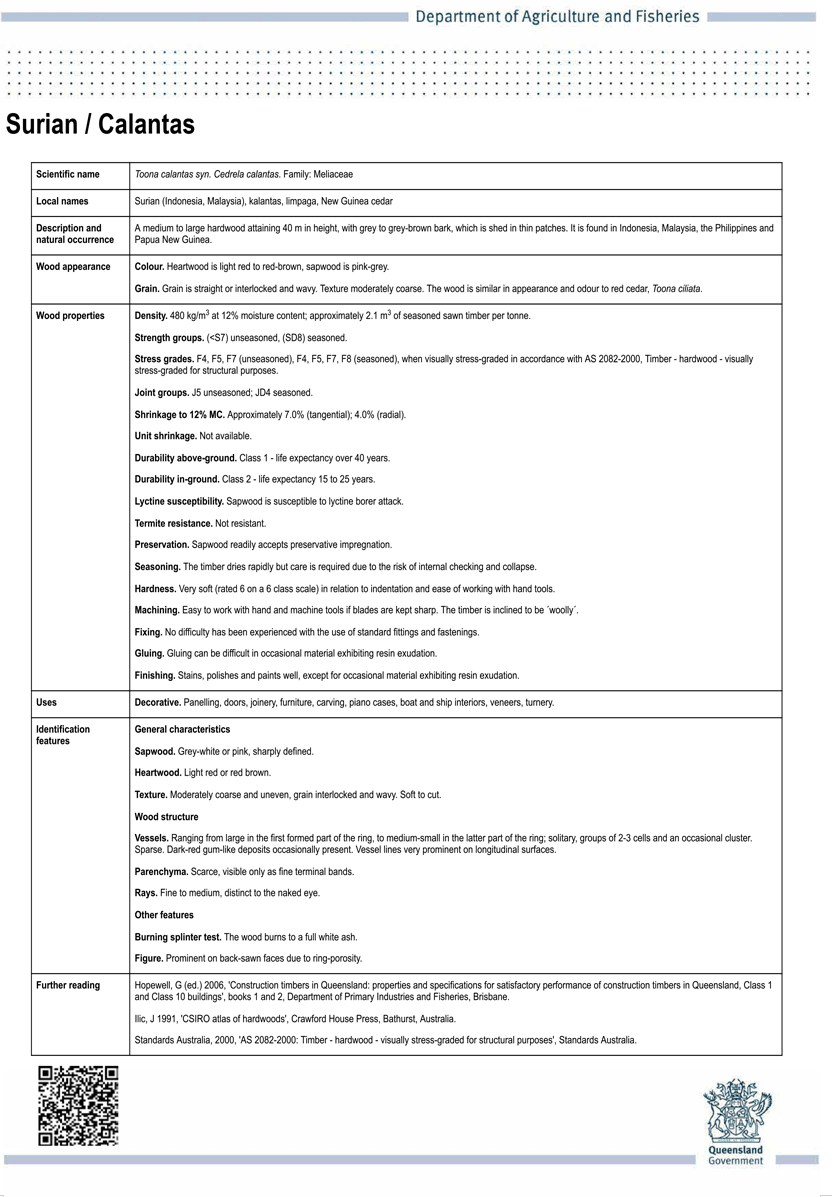
WHY IS CEDAR CALLED THE KING OF TIMBERS?
Varieties of Cedar have been treasured for thousands of years. To the writers of old testament, they were regarded as a gift from God himself. "My beloved's countenance is excellent as the Cedars" records the Song of Solomon. Cedar was used to build King Solomon's chariot, Noah's Ark and the fleets of the Egyptian Pharaohs. The Emperors palace in Bejing is made from Cedar identical to that used by Woodworkers.
DOES WOODWORKERS USE AN AUSTRALIAN TIMBER?
Most joinery timbers used in Australia are imported. This is the result of inadequate planning in previous generations and responsible logging restrictions now. Commercial quantities of Eucalyptus species with marketing names like Victorian Ash and Tasmanian Oak still exist in Southern Australia, but these are not generally used for external work in northern Australia as they are not durable. Jarrah, another Eucalyptus species from Western Australia is reasonably durable but not widely available and frequently has excessive pinhole and gumvein. Large plantations of Hoop Pine and Radiata are used for general building purposes but not widely used for joinery as the timber is not durable, not stable, and toxic(after preservative treatment). From the time of first settlement imported timbers have been widely used for joinery in Australia. Initially these timbers were from North America e.g. Redwood, Oregon and Western Red Cedar but more recently the Asia Pacific region has supplied most quality joinery timbers. Woodworkers are integrally involved in our timber supply chain to ensure that environmentally responsible and legal sources are used and that intelligent milling and recycling practices are followed. Refer our separate FAQ sheet on Environmental issues for more information.
I'VE HEARD THAT CEDAR IS TOO SOFT AND DAMAGES EASILY. IS THAT TRUE?
Cedar was used for all colonial buildings of any note and virtually all National Trust heritage buildings feature original Cedar joinery that has survived close to two centuries of wear and tear. Australian Cedar and its imported cousins are hardwoods and, though not heavy are entirely serviceable and durable. Western Red Cedar from North America is much softer than genuine Cedar and has been responsible for the folklore regarding 'cedar softness'. Woodworkers do not use Western Red Cedar for external door and window joinery for this reason. As a rule of thumb, timbers from cold climates do better in cold climates and tropical and temperate timbers do better in their natural environment. Woodworkers therefore use Cedar as the mainstay for its range as it is native to Australia's Eastern seaboard.
SHOULD I EXPECT ALL TIMBER TO BE PERFECT?
No. It is irresponsible to expect all timber to be blemish free and colour matched. Small knots, uneven grain and colour variations are to be expected in a natural product and are part of its charm. Timber is a scarce resource and the wastage that would result from unrealistic grading would be environmentally unacceptable. While Woodworkers generally seek to use any slightly blemished timber away from eye level in any product, we do not reject timber unless it has serious structural faults.
HOW DO I GET ALL TIMBER TO BE THE SAME COLOUR?
There are propriety grain fillers available that experienced painters use to bring different timber variations to a common colour. These are applied to the raw timber like a water colour wash before the finishes are applied. They must be compatible with the coating system proposed to finish the joinery. Alternatively, there are timber stains which combine the finish with the colour, which will mask colour variations effectively. Refer to our separate FAQ sheet on our recommended finishing systems.
I'M PAINTING THE TIMBER. CAN'T I USE CHEAP TIMBER AS IT WON'T BE SEEN?
No. The performance of joinery relies on its stability and durability and the paint finish will not hide joinery that sticks, swells, and rots over time. Woodworkers use first quality joinery timber for all its work, regardless of the proposed finish, as performance is our paramount concern.
DOES ALL THE TIMBER IN MY HOUSE HAVE TO MATCH?
No. Timber goes with timber. A lot of energy gets wasted trying to match species for floors, joinery, furniture, staircases, etc. when diversity is more interesting. Timbers need to be chosen for their suitability for the purpose and then stained or bleached for the desired aesthetic outcome. It is a waste of money and irrational to chose timber by its colour if it is not suitable or warranted for an external application like doors and windows.
WHAT ARE ENGINEERED TIMBER DOORS?
‘Engineered’ is a term used to describe laminated and/or finger joined timber that is usually covered with a veneer to improve its appearance. The core of engineered doors can sometimes simply be cardboard, but more commonly it will be finger jointed or laminated off-cuts, often in an inferior timber.
Engineered doors only have limited durability because they are only as strong as the glues used and the adhesion of the external veneers. They are generally stable and remain straight as there is no ‘memory’ in the composite laminations that solid timber has. (relating to its experience in the tree). However, they are not suitable for external use, unless fully protected, as they will decompose over time as shown in the photo. Engineered doors are however often suitable for internal doors that never see the weather.
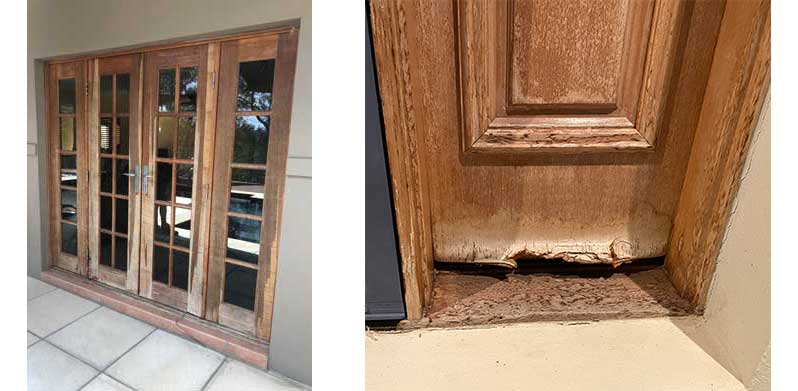
GLASS FAQ
Table of contents
- WHAT GLASS IS USED IN JOINERY?
- WHAT IS SAFETY GLASS?
- WHAT TYPES OF GLASS ARE AVAILABLE?
- HOW DOES GLASS REDUCE NOISE TRANSMISSION?
- DO SOME GLASSES HAVE BETTER THERMAL PERFORMANCE?
- DOES WOODWORKERS USE "PAINT & PEEL" ON GLASS?
- HOW DO I CARE FOR AND CLEAN THE GLASS?
- WHO'S RESPONSIBLE FOR SCRATCHES ON GLASS?
- WHO'S RESPONSIBLE FOR GLASS CRACKS OR BREAKS?
- WHAT STANDARDS APPLY TO STOCK LEADLIGHTS?
- DOES WOODWORKERS PUT MANIFESTATION STICKERS ON GLASS?
- DOES WOODWORKERS USE TIMBER BEADS OR PUTTY TO FIX GLASS IN POSITION?
- WOODWORKERS GLAZING OPTIONS
WHAT GLASS IS USED IN JOINERY?
All glass used in both windows and doors needs to comply with the Australian Standard AS1288-2006 if your building is to pass the certification process. Generally speaking, this requires that in a "Human Impact" situation all glass with an area greater than 0.26 square meters (with a maximum span of 300m) MUST be safety glass. Human Impact generally applies to the following -
- All doors
- Sidelights - defined as being within 300mm of a door in any direction
- Joinery with a sill height of less than 500mm above the floor (including louvres)
- Items in Stairwells with a sill height less than 1000mm above the traffic surface
- Window seats where the glass is less than 500mm above the seat
- Bathrooms, irrespective of position
- Ensuites with a bath, any room with a spa
If the item does not fall into the category of "Human Impact" then ordinary 4mm annealed glass can be used. Woodworkers does not use 3mm at all for normal aplications.
Always ask our sales staff if the glass you propose to us will be compliant as the onus is on you to advise the Woodworkers if glass is to be installed in any position or in any geographic location where restrictions could apply.
WHAT IS SAFETY GLASS?
Safety glass is either laminated or tempered. Not all glass types are available as safety glasses.
Laminated glass comprises of two layers of ordinary annealed glass held together by a tough silicone PVB interlayer. It breaks like normal glass but does not disintegrate, being held in place by the interlayer. Most commonly available at 6/38mm thick, greater thicknesses are possible for acoustic situations. Laminated glass significantly reduces sound penetration, is a reasonable thermal barrier, can easily be cut and is therefore used by Woodworkers for most general fabrication work.
Tempered glass, also known as toughened glass, (which breaks into relatively harmless glass 'confetti') is a process of reheating cooling annealed glass to make it more flexible and harder to break. It has approximately 4-5 greater breaking strength than annealed glass but cannot be cut or machined after the toughening process and it scratches more easily than annealed glass. Woodworkers use toughened glass in many of their stock doors but generally do not use it for custom fabrication work.
GLASS CHOICES
WHAT TYPES OF GLASS ARE AVAILABLE?
Clear Glass
For general work, 4mm clear annealed glass is used, with 4mm clear toughened or 6.38mm clear laminated glass for safety glass applications. Clear glass is generally used for Woodworkers stock doors and windows.
Tinted Glass
There are inexpensive generic glasses available in bronze, grey and green tint in laminated, toughened and normal annealed form. There is a large range of more expensive tints available in blue, dark green, dark grey and others. Tinted glasses have little impact on heat transmissions but can reduce the penetration of UV radiation. Some grey glass for example, can decrease UV penetration by approx 60-70%.
The thicker the tinted glass and the darker the tint, the more heat it absorbs which can make dark tints prone to thermal breakage. For this reason, dark grey tints need to be tempered to reduce internal tensions in the glass.
Performance Glass
Generally known as Low-E glass (low Emissivity - the ability to minimise heat passing through the glass) is available with varying thermal characteristics. The most commonly quoted values are the U Value n(watts/M2 celcius) and the SHGC (solar heat gain co-efficient). Both of these values generally denote the amount of heat that radiates through the glass and for both measures the lower the reading, the better the thermal performance of the glass. Increasingly they are being used in the colder situations where councils specify energy ratings for new homes. For further information refer FAQ 22. If you have specific requirements, discuss them with our sales staff.
Coloured Glass and Leadlights
Generally the same problems as with patterned glass and as most colored glass is made for leadlighting uses, it is usually to thin for door and window work under modern codes. Traditional headlights have exemptions under the glazing codes, as each glass used is small. Traditional leadlights are fragile and can be high maintenance. Woodworkers stock a range of triple glazed leadlights where a traditional leadlight is sandwiched in a void between two layers of clear toughened safety glass. This reduces maintenance and greatly improves strength and security. Another option is to use the security leadlight system which used lead and colour applied to a background piece of toughened safety glass.
Obscure Glass
This generic term is used to define a whole range of glasses that obscure the view, generally for privacy reasons. Obscure glass generally falls into 2 categories - translucent and patterned.
- Translucent effects can be achieved by either surface treatment (such as sand blasting, acid etching or printing) or by laminating 2 sheets of glass over an obscure silicone bonding layer or using a patterned glass on one face of the laminated composite.
- Pattered glasses come in a wide range of designs but many of the older traditional patterns are not still available or are no longer compliant to modern glass codes. This creates issues in matching many of the heritage colored and obscure glasses commonly found in restoration work as these glasses, if still available are usually classified as 3mm thick, (not able to be toughened) and are therefore not acceptable under the current codes. Cold laminating can be considered in exceptional circumstances to make non-compliant glass legal but the costs are high. Usually a similar pattern in a compliant glass is available if you don't need to match exactly.
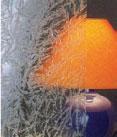
glue chip

sparkle
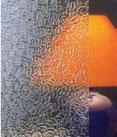
kosciusko (see last page for variations)
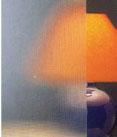
satinlite
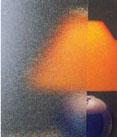
spotswood

cathedral
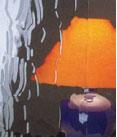
flemish
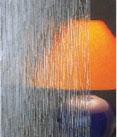
seadrift
Reflective Glass
Rebounds the sun's rays and thereby limits heat intrusion. At night the process is usually reversed and the glass becomes a mirror to the inside which can be disconcerting. Some Councils set limits on amounts of reflective glass because of glare to neighbours. Pilkington manufacture a one-way only, reflective mirror glass (which is expensive) but can be used for smaller feature applications.
Self-Cleaning Glass
Prohibitively expensive approx $300 plus per square metre and can have problems with its external film reacting with the silicones usually used in the flashing and sealing process. Special silicones are available if you need to glaze an item in an inaccessible position where maintenance is impractical.
Slump Glass
Is made by melting glass over a pattern background which then needs to be tempered in large kilns to make to safety glass compliant. Slump glass is an imperfect science and only used for feature applications.
Should I have double-glazing?
One of the most common questions we hear is “should I put double glazing in my joinery?”
For many people, double-glazing is synonymous with energy efficiency and comfort.
The short answer is it depends on why you think you want double-glazing. You might not get the outcome you are looking for unless you consider all the associated implications.
Let us walk you through some of the pros and cons of double-glazing. One caution at the outset is never rely on someone who only sells double glazing to give you accurate advice on their suitability. We could sell a lot more double glazing if we wanted to – because that’s often what people think they need.
But we’re not here to sell you expensive ineffective solutions. In fact, we’re going to show you why we rarely recommend double glazing.
The first thing you need to ask is ‘do I really want double-glazing or do I want the benefits that I hope double glazing will bring’? Generally, people are trying to make their house warmer, cooler and/or quieter.
Thermal and acoustic discomfort can originate through the floors, ceiling or walls of a building, not simply through the doors and windows. If your walls are hollow and thinly lined, the floor simply 20mm thick timber or the ceiling a mere 10mm thick plaster board with metal roofing above, you’ll find that noise, heat or cold will enter through the structure as much as through the door and window openings. Insulating the doors and windows in isolation to the rest of the structure will achieve little benefit. Double glazing needs to be partnered with wall, floor and ceiling insulation or heavy masonry structure to be effective.
Whatever your priorities, they need to be considered in the context of the building as a whole.
Now let’s explore your options.
If you want to make your home quieter, you can …
- Install laminated glass which will have equivalent sound reduction capability as double glazing.
- Seal air gaps in other areas of your home such as doors, floors, and wall vents
If you want to make your home cooler, you can …
- Install low-emissivity (Low E) glass or tinted glass to cut solar heat gain as much as possible.
- Install tinted or reflective films on the glass.
- Install external shading
- Seal air gaps in other areas of your home such as doors, floors, vents, etc.
If you want to make your home warmer, you can …
- Install low-emissivity (Low E) glass
- Install double-glazing but only if your wall, ceiling and floors are insulated to a similar standard.
- Seal air gaps in other areas of your home such as doors, floors, vents, etc.
- Change your window furnishing. Curtains, blinds and shutters can all make a big difference in the right circumstances
When you are clear about your priorities, you begin to see that you have a lot more options than just double-glazing. Double-glazing by itself will not achieve a great deal unless it is part of a holistic approach to insulation.
Double-glazing is expensive and if you’re using spiral balances be aware that conventional spiral balances are NOT rated to carry the weight of a double-glazed unit. You must install heavy duty balances that are specially designed for that weight of glass. Similarly, if you are using casements or hoppers you will also need heavy duty hardware to handle the additional weight. You need to be aware that expenses tend to snowball when you opt for double glazing which may not bring the benefits you’re looking for.
HOW DOES GLASS REDUCE NOISE TRANSMISSION?
The human perception is that a 10 decibel drop in noise is percieved as a halving of noise volume.
| General sound levels expected as follows: | |
| 90db | noisy factory/very loud street |
| 70db | average street |
| 60db | average office |
| 40db | private office |
| Sound reduction with different types of glass as follows: | |
| 4mm | 25db |
| 6mm | 27db |
| 20mm double glazed units | 27db |
| 6.38mm lam | 29db |
| 6.76mm lam | 31db |
| 10.38mm lam | 36db |
It can be seen that standard laminated glass (6.38mm) is a very good acoustic performer and is actually better than many double glazed units (DGUs) which are expensive and hard to incorporate into joinery because of their thickness.
The resolution of noise problems is a complex issue. Laminated glass is the best option to reduce noise but is most effective at high frequencies (e.g. aircraft noise). Thicker laminated glass with a thicker interlayer will be more effective in low frequency noise reduction. If you have a specific noise problem we recommend consultation with an acoustic engineer or the technical department of a glass manufacturer. Even when acoustic windows are fitted, if there is the smallest of gaps e.g. under a door, vents poor perimeter sealing etc, then acoustic windows can be ineffective.
DO SOME GLASSES HAVE BETTER THERMAL PERFORMANCE?
Yes. For cold climates, the best thermal performance is reducing heat loss comes from double glazed sealed units or from Low E glass. Double glazed units have 2 layers of glass sealed with an air, vacuum or gas envelope between them. Low E glass stands emissivity and is glass coated with a virtually clear material that acts to cut transmission of UV rays through the glass and the passage of heat in and out of the building. Low E glass improves thermal efficiency, cuts glare and reduces UV damage to internal furnishings. For further info on Thermal performance see FAQ 22.
DOES WOODWORKERS USE "PAINT & PEEL" ON GLASS?
The use of a plastic film between the glass and its housing in the joinery creates a micro gap which will allow water to penetrate as the film deteriorates. Paint protection is better achieved by masking rather than plastic film and paint should be permitted to run onto the glass approx 1mm all round to fully weather seal the glazing. For certain toughened glass products, Woodworkers use film to protect the face of the glass but it does not run under the glazing beads for the reasons outlined above.
HOW DO I CARE FOR AND CLEAN THE GLASS?
The new glass is usually not cleaned in the factory. Construction debris, including concrete dust (which is very abrasive) can damage glass as well as joinery if it accumulates on the joinery on site. Particular care needs to be taken with toughened glass as it scratches easily. Some performance glasses also have surface coatings that require extra care. It is important that you don’t use corrosive cleaners, abrasive pads or dirty rags to wipe down glass. It is best cleaned with a water spray followed by glass cleaner or ordinary shaving foam removed carefully with rubber fins or soft cloth. If stubborn residue remains from protective films etc, eucalyptus oil is the best agent for its removal. Glass should not be cleaned when it is hot or in direct sunlight as it can crack. Do not allow the temperature to vary rapidly i.e. don’t throw cold water over hot glass.
WHO'S RESPONSIBLE FOR SCRATCHES ON GLASS?
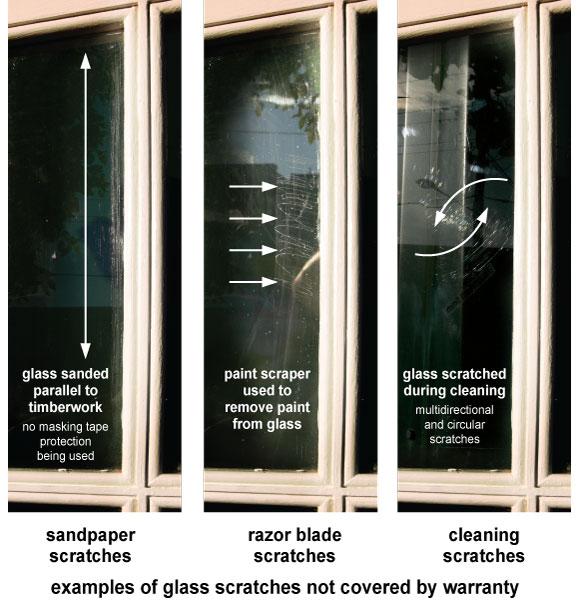
The Australian standard AS4667 defines scratches, scars and rubs in glass to be unacceptable only if they can be observed from 3 meters away when the glass is perpendicular in daylight without direct sunlight. Nearly all glass will end up being scratched over time due to normal usage from, for example, people with rings on their fingers knocking or cleaning the glass. Determining how glass was scratched and by who is a perennial cause of conflict in the building industry however, as often unrealistic expectations are demanded that far exceed the Australian Standards. Woodworkers experience is that most scratches are caused during the painting and cleaning process if inadequate precautions are taken. Scratching of glass is particularly easy to do with toughened glass. The clue to whether glass scratches originate in the joinery factory or on site is whether the scratches run in straight lines or random swirls or swipes. Straight line scratches are likely to originate in the glass cutting or toughening process and their origin can usually be determined if the lines run under the glazing beads that hold the pane in position. In those circumstances, the fault lies with the glass supplier or joinery. If however the scratches stop short of the glazing beads, they are likely to originate after the joinery has been glazed - usually from sanding undercoats, razor blade removal of paint or cleaning with a gritty rag or cleaner. Woodworkers does not sand or clean joinery after glazing so we don't take any responsibility for defects with swirls or multidirectional lines. It has also been our experience that although it is possible that a single pane of glass may get installed in joinery without a scratch being noticed, it is highly unlikely that multiple panes would be factory installed in a joinery item. In instances where scratches are wide spread, the chances that their origin was during manufacture are remote. Our video on "How to finish joinery" shows how the glass should be protected with masking tape during the painting process. Claims for damage to glass cannot be accepted after goods have been out of the factory for any length of time and must be notified within 24 hours of collection or delivery.
WHO'S RESPONSIBLE FOR GLASS CRACKS OR BREAKS?
When glass is put under pressure from glazing nails coming into contact with the glass, it can (over a few days or weeks) start a crack which will progress across the sheet. Such cracks are a manufacturing faults and are easy to identify as they will originate from a pressure source (eg. nail). Most other cracks originate from impacts that occur on building sites and are not covered by warranty. Toughened glass panels can, occasionally, explode due to cold / hot differences on the glass surface caused, for example, by shade cooling only one part of a glass pane. Such occurrences are rare and are not covered by manufacturers warranty if the panel has been exposed for more than a week. They are however, usually covered by building insurance. Toughened glass breakage more commonly occurs when a chip or point impacts the glass originating from other adjacent activities and are not covered by warranty.
WHAT STANDARDS APPLY TO STOCK LEADLIGHTS?
Because our leadlights are handmade there can be minor variations in design. colour and texture which are not considered defects. There can also be minor residue from the lead putty process used to fix the glass into the lead 'H' section. The leadlights are set in a desiccant sealant around the outside to restrict airborne water from entering the triple glazed sandwich but very minor water droplets can still develop inside the unit over time. These are not considered a defect unless they affect the appearance of the leadlights judged by the criteria of The Australian standard AS4667 to be visible to the naked eye viewed from 3 metres in diffused light. This same criteria is applied to scratches, scars and rubs in the toughened glass envelope. In service, glass will endure minor scratching on a daily basis when, for example, somebody taps on the glass wearing a ring. Minor scratching is inevitable and not considered a defect. Woodworkers stock leadlights are made in a cottage industry environment and represent excellent value, less than half the cost of mass production alternatives. we prefer to encourage traditional craft production which can be slightly more rustic but is completely authentic.
DOES WOODWORKERS PUT MANIFESTATION STICKERS ON GLASS?
No. Visibility strips should be fitted by the builder at the end of the project after all glass cleaning is complete. Woodworkers sells adhesive strips to comply with the manifestation requirements of AS1288. These strips serve to make glass more obvious where large panes could be mistaken for a thoroughfare. For further info please refer FAQ 22.
DOES WOODWORKERS USE TIMBER BEADS OR PUTTY TO FIX GLASS IN POSITION?
For most general work we use a 10 x 10 Bullnose shaped timber bead to restrain the glass but we can use tinted or white putty if required. Putty is the traditional method of glazing timber joinery but it has been largely replaced by the timber bead method since the advent of glazing silicones to weatherseal the beads. Putty has the disadvantage that it takes several days to achieve a surface firmness sufficient to withstand normal handling. It then usually takes 10 to 15 weeks to go 'hard'. During this time it is attractive to birds and animals for its high oil content and is often damaged by wildlife, children and careless tradesmen. Putty can only be painted with linseed oil based paints and special attention has to be paid during the glazing process to protect laminated glass from putty as it chemically attacks the silicone interlayer. Beads on the other hand allow immediate handling and painting and are easier to remove if reglazing is required due to breakage.
All timber joinery is manufactured to have glazing beads to the outside. If joinery is installed the wrong way around with beads to the inside, the possibility of water leaks is greatly increased.
WOODWORKERS GLAZING OPTIONS
AVAILABLE AS SAFETY GLASS SUITABLE FOR DOOR GLAZING

Clear & e glass
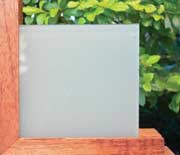
White Translucent
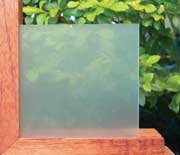
Soft white
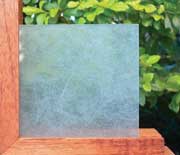
Shoji
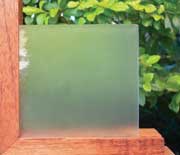
NFP frost
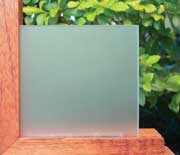
Acid etched
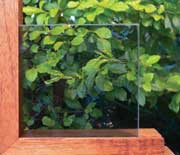
Grey
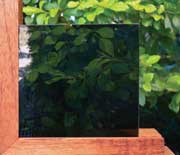
Dark grey
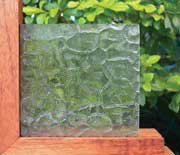
Oceanic
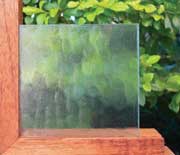
Cathedral
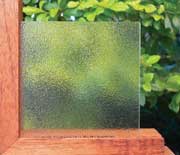
Spotswood
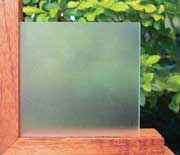
Satinlite
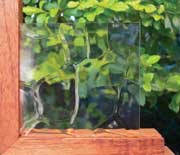
New flemish
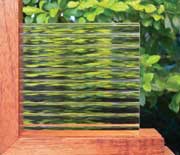
Narrow reeded
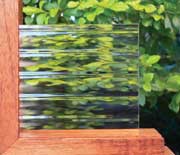
Broad reeded

Acoustic lam
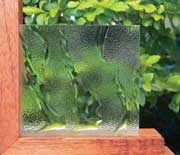
Desert sand
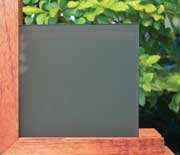
Grey translucent
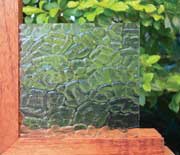
# Arctic
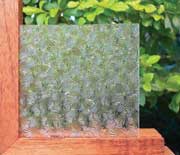
# Florentine
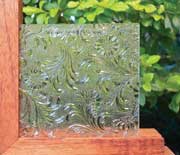
# Jap daisy
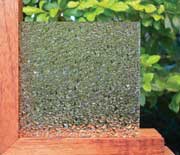
## Sparkle
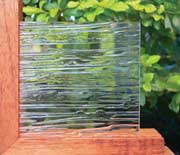
# Sea drift
WINDOW GLAZING ONLY. NOT READILY AVAILABLE AS SAFETY GLASS
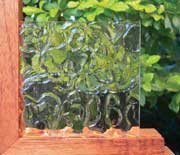
Wissmach flemish
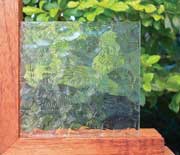
Woodworkers white artico
 My Account
My Account My Wishlist
My Wishlist My Enquiries
My Enquiries